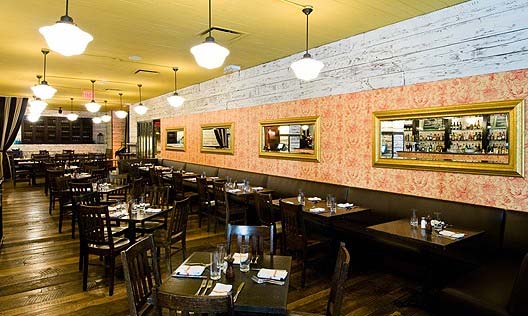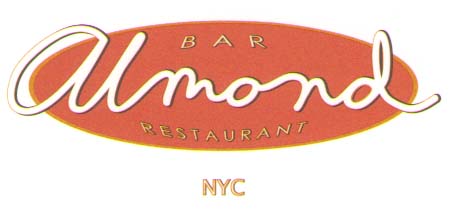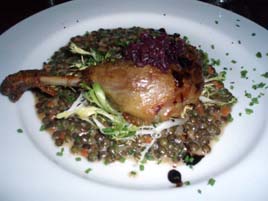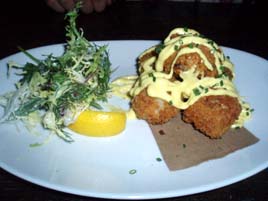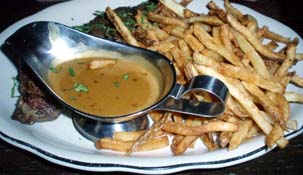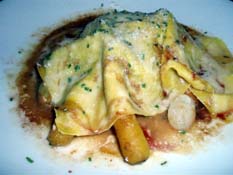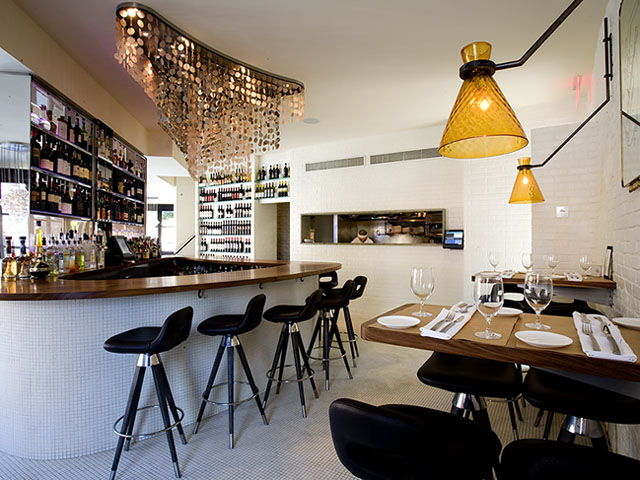La Focaccia
 Sunday, February 22, 2009 at 11:33AM
Sunday, February 22, 2009 at 11:33AM Note: La Focaccia closed in the summer of 2010.
*
La Focaccia is one of the seemingly infinite neighborhood restaurants that inhabit West Village street corners. It would be a full-time job to sample them all, but La Focaccia caught our eye, thanks to a wood-burning oven, clearly visible from ceiling-height picture windows facing on West Fourth and Bank Streets.
The place has rustic Northern Italian charm, with tile tabletops and a pressed tin ceiling, but tables are cramped tightly, and a room full of hard surfaces amplifies the din. There’s a steady trail of walk-ins, ensuring that no table goes unoccupied for long.
Oddly enough, the bread did not seem to be focaccia—it was thicker than it should be. However, it was soft and served warm, which was good enough.
 Portions are on the hearty side. When the server brought two large bowls of gnocchi with pesto sauce ($16; right), we were sure she had misunderstood our request for a single order to split, not two separate orders. Our fears proved unfounded when the bill arrived, and we were charged for just one order of gnocchi.
Portions are on the hearty side. When the server brought two large bowls of gnocchi with pesto sauce ($16; right), we were sure she had misunderstood our request for a single order to split, not two separate orders. Our fears proved unfounded when the bill arrived, and we were charged for just one order of gnocchi.
And it was a perfectly respectable gnocchi that I would be happy to eat again. (The photo was snapped after I’d already eaten half of it.)

Among the entrées, the mixed grill for two ($58) is the choice for those who are indecisive. It’s a massive portion of lamb, chicken, sausage, steak, and vegetables, which we could not finish. We puzzled at the logic of including three lamb chops on a plate designed to be share by two people, especially as the lamb was easily the best of the bunch, with the sausage a close second. The chicken was forgettable, the steak and vegetables pedestrian.
The wine list has plenty of choices if you’re on a budget. A 2003 Salice Salentino at $30 was just fine for our purposes. The unevenness of the food, coupled with the loud surroundings, did not leave us with any urge to return.
La Focaccia (51 Bank Street at West Fourth Street, West Village)
Food: Satisfactory
Service: Good
Ambiance: Charming, if you wear ear plugs
Overall: Satisfactory







